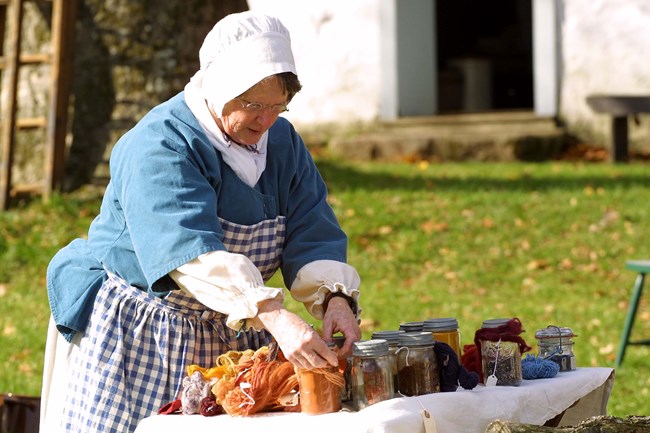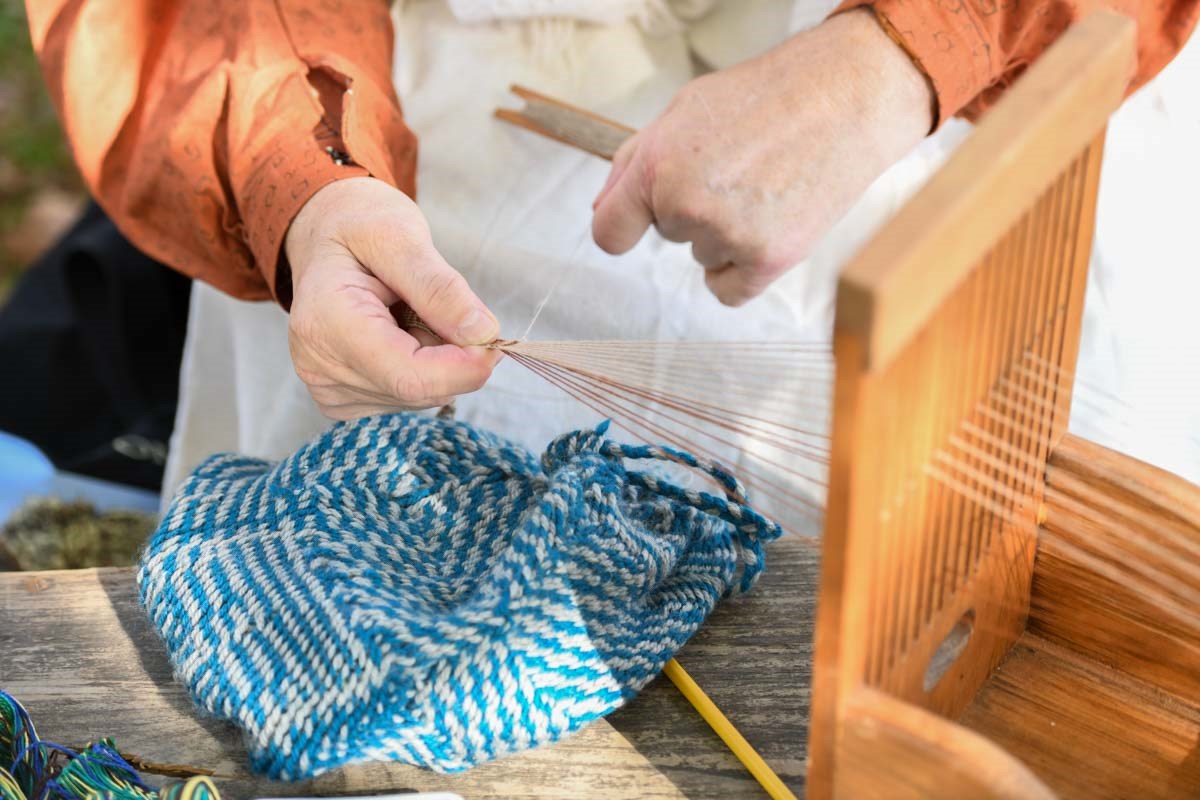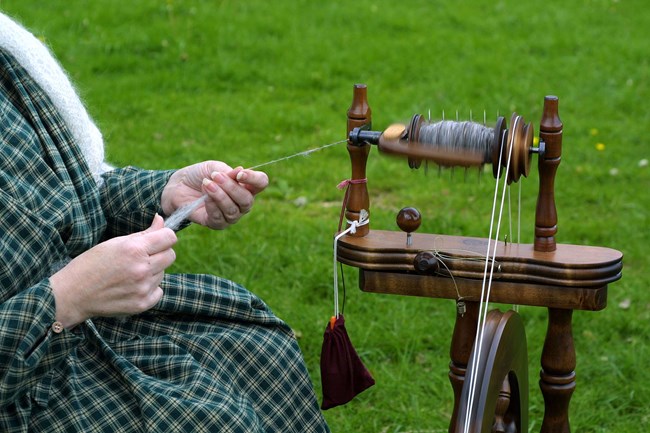
NPS Photo The Work Experiences of Women at Hopewell FurnaceWomen at Hopewell Furnace worked in many roles to improve their lives and the general well-being of their families. In addition to childcare and domestic chores, women often supplemented the family income by working various jobs. Teachers, Cooks, Seamstresses and MaidsSome local women earned money by preparing and selling a variety of food goods such as butter, pickles, and bread. They also profited by selling eggs and chickens as well as making and selling candles and soap. Single men often payed for a home-cooked meals. These men also paid women to wash and mend their clothes. Women skilled with a needle found work as seamstresses for single men and for residents of the Ironmaster’s Mansion. Homes with spinning wheels provided women with an opportunity to increase the family income through the sale of thread or yarn. Outside their homes, women performed a variety of jobs at Hopewell Furnace and in the surrounding area. They served as maids and cooks at the Ironmaster’s Mansion and as teachers at the school. Hopewell employed several women as teachers including Susan Brown in the 1830’s and Catherine Rhoads in 1871. 
NPS Photo FarmersWomen and children were hired to perform numerous seasonal duties on farms at Hopewell and in the surrounding area. These tasks included hoeing corn, binding grain, pulling flax, shearing sheep, and picking apples. Usually women were hired during the harvest, but several chores were available all year, including whitewashing fences and buildings and milking cows. Woodcutters, Miners and Furnace WorkersThe hills surrounding the furnace provided the wood needed to make charcoal, the fuel used for iron production. Here some women employed as woodcutters earning 27 cents per cord to cut and haul wood. For one 30-year period, 6 women were credited with cutting wood. Women also have a connection to the trades. Two widows, Margaret Painter and Elizabeth Mervine, were employed to clean castings and prepare the iron for market. This was a strenuous job, tipping stove plates and other iron items while removing sand from the pattern. Women could also be found at the iron ore mines. During the early 1830s, Mary Beavens, Elizabeth Mauger, and Eliza Painter were paid for mining ore, and Henry Painter collected pay for more than 13 loads of ore sent to the furnace by his daughter. Furnace records show that from 1837-1846 Jane Clemons was paid as a molder. However, little is known about these women and perhaps they simply accepted wages on behalf of their male relatives. 
NPS Photo Changing TimesAs the 19th century ended, Hopewell Furnace could no longer operate profitably as more efficient and cheaper methods of making iron were developed and industries moved out of the rural areas and into the cities. This forced the families of Hopewell and the surrounding area to gradually find jobs elsewhere. |
Last updated: February 4, 2025
